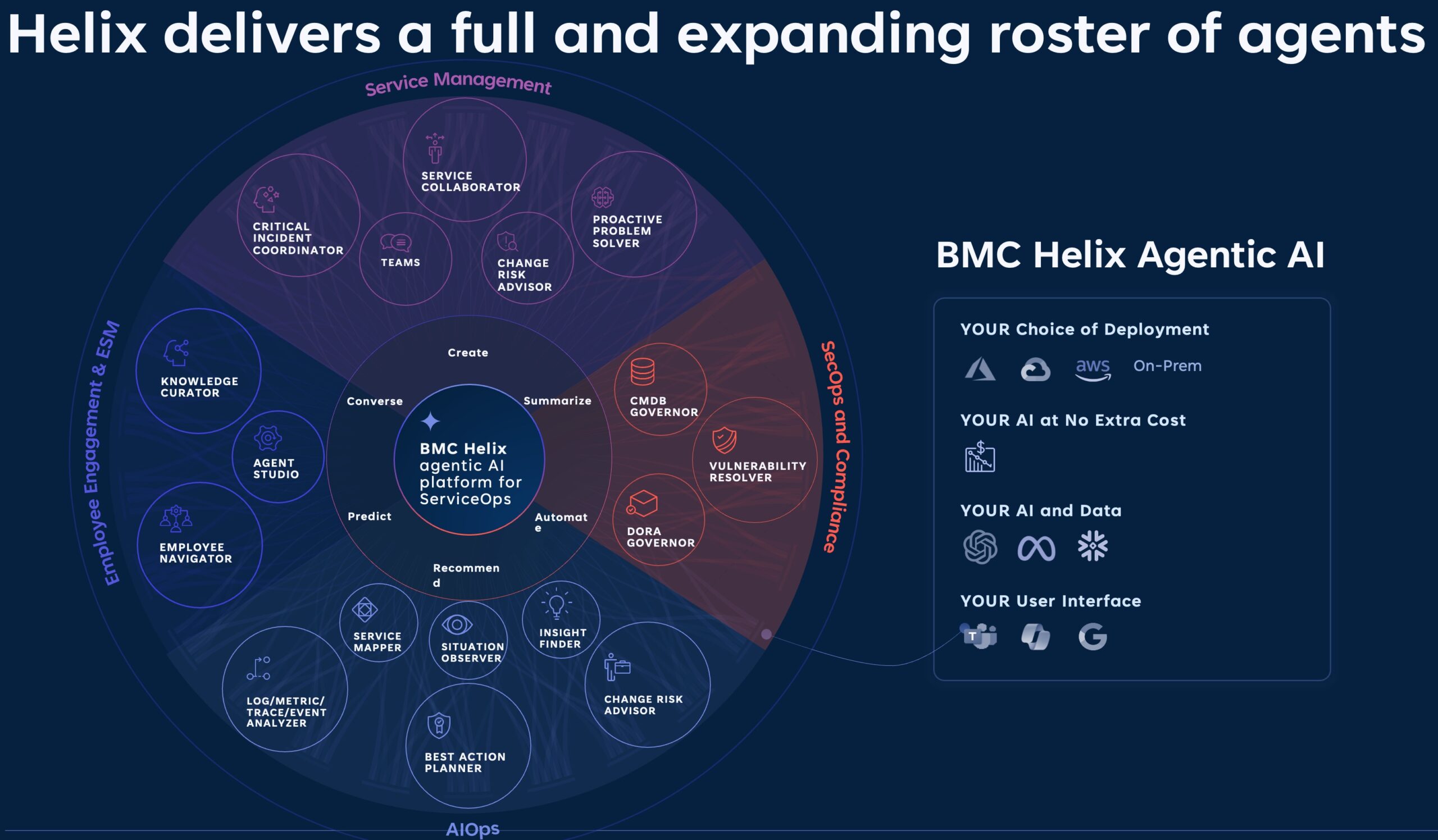
BMC Helix has added additional artificial intelligence (AI) agents to its IT service management (ITSM) platform to automate a wider range of tasks.
Ryan Manning, chief product officer for BMC Helix, said the latest natural language agents added to version 25.2 of the BMC Helix platform automate tasks pertaining to observability, discovery, application performance optimization and the surfacing of insights that help prevent major incidents from potentially occurring.
For example, a BMC HelixGPT Post Mortem Analyzer provides a detailed review and summary after an incident to help IT teams better understand what changes might be needed to prevent recurrence.
BMC HelixGPT Insight Finder, meanwhile, can, via a chat interface, dynamically generate dashboards and reports about issues impacting service health.
Meanwhile, a BMC HelixGPT Employee Navigator has been enhanced to enable image file processing to make it possible to capture and submit images directly using their mobile phone camera.
Other AI agents provided include BMC HelixGPT Ops Swarmer to make it simpler to launch Microsoft Teams sessions directly from within BMC Helix ITSM solution and a BMC HelixGPT Catalog Curator that automatically generates a list of service offerings provided by IT teams.
In the future, BMC Helix will be adding additional agents to automate, for example, configuration management database tasks, noted Manning.
Collectively, these and other AI agents are capable of evaluating previous responses to similar issues and can recommend which members of the IT team are most likely best able to respond, he said.
Additionally, IT teams can also build custom AI agents that can be configured using a no-code BMC HelixGPT Agent Builder tool.
IT teams can also take advantage of support for the Model Context Protocol (MCP) developed by Anthropic to create workflows spanning multiple agents, noted Manning. That capability also provides the ability to integrate BMC AI agents with agents developed by providers of other IT platforms, noted Mannig.
Each of the BMC agents is capable of invoking multiple AI models based on which one is best able to complete a task. The Bring Your Own Model approach to agentic AI provides a maximum level of flexibility that prevents IT teams from becoming locked into any specific LLM, said Manning.
None of these capabilities is likely to eliminate the need for IT professionals, said Manning. AI agents still need to be governed and supervised, but they will significantly reduce much of the toil that IT administrators currently experience, said Manning.
In fact, AI agents may make it feasible for organizations to deploy even more applications than they can today, given the amount of IT staffing that is currently required to manually perform a wide range of IT operations.
The one certain thing is that the roles and responsibilities assigned to IT professionals will evolve in the age of AI. Many IT professionals will discover that many of the tasks they least enjoy performing themselves can be assigned to an AI agent that has been trained to specifically complete it. The challenge and the opportunity then become determining which remaining tasks are best performed by the IT teams that supervise those AI agents.


